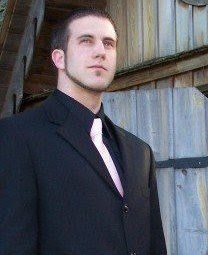In the Know #6
January 10, 2008
Word of the Day from Dictionary.com:
remonstrate \rih-MAHN-strayt; REH-mun-strayt\, intransitive verb:
1. To present and urge reasons in opposition to an act, measure, or any course of proceedings -- usually used with 'with'.
transitive verb:
1. To say or plead in protest, opposition, or reproof.
Today in history, according to Wikipedia:
 1776 - Thomas Paine publishes Common Sense.
1776 - Thomas Paine publishes Common Sense.1920 - The League of Nations holds its first meeting and ratifies the Treaty of Versailles ending World War I.
1929 - Tintin (pictured, with Snowy), a comic book character created by a Belgian artist under the pen name of Herge, makes his debut. Tintin would go on to be published in over 200 million comic books in over 40 languages.
1946 - The first General Assembly of the United Nations opens in London. 51 nations are represented.
1990 - Time Warner is former with the merger of Time Inc. and Warner Communications Inc.
Today's Famous Births:
 1738 - Ethan Allen, American Revolution military leader
1738 - Ethan Allen, American Revolution military leader1883 - Aleksei Nikolaevich Tolstoi (pictured), Russian writer, War and Peace and Anna Karenina
1938 - Willie McCovey, American baseball player, 6-time All Star
1939 - Sal Mineo, American actor
1945 - Rod Stewart, Scottish singer, "Have I Told You Lately?"
1949 - George Foreman, American boxer
1953 - Pat Benatar, American singer, "Hit Me With Your Best Shot"
1953 - Bobby Rahal, American race car driver and team owner
Trivia:
Today's category - The Hershey Company
 ~ Milton S. Hershey's first candy shop, located in Philadelphia, failed.
~ Milton S. Hershey's first candy shop, located in Philadelphia, failed.~ After a second failure in New York, he returned to Pennsylvania and founded Lancaster Caramel Company, which he sold for $1,000,000 in 1900.
~ In 1903, Hershey began construction of a chocolate plant in Derry Church, Pennsylvania.
~ The Hershey Kiss (pictured) was introduced in 1907.
~ Hershey manufactures non-chocolate candies such as Bubble Yum, Jolly Rancher, Good & Plenty and Twizzlers.
I always wondered...
...how a DVD works...
 A DVD (pictured) is composed of several layers of plastic, creating a thickness of about 1.2 millimeters. Information is encoded in a series of bumps arranged in a single, continuous spiral track of data. The tracks are separated by only 740 nanometers. Each of the bumps is 320 nanometers wide, 400 nanometers long and 120 nanometers high. If the track were stretched out into a straight line, it would extend almost 7.5 miles. This means a double-sided, dual-layer disc's data track would stretch nearly 30 miles. For a dual-layer disc, aluminum is used for the inside layer and a semi-reflective gold is used for the outer layer, which allows the DVD player's laser to read through the first layer.
A DVD (pictured) is composed of several layers of plastic, creating a thickness of about 1.2 millimeters. Information is encoded in a series of bumps arranged in a single, continuous spiral track of data. The tracks are separated by only 740 nanometers. Each of the bumps is 320 nanometers wide, 400 nanometers long and 120 nanometers high. If the track were stretched out into a straight line, it would extend almost 7.5 miles. This means a double-sided, dual-layer disc's data track would stretch nearly 30 miles. For a dual-layer disc, aluminum is used for the inside layer and a semi-reflective gold is used for the outer layer, which allows the DVD player's laser to read through the first layer.The wavelength of a DVD laser is 640 nanometers, allowing it to read the bumps on the track. The light from the laser is bounced off the bumps and hits an optical sensor, which interprets the changes in reflection into bits and bytes. The laser moves outward as the DVD plays. The disc spins slower the farther the laser is from the center in order the keep the speed of the track moving past the laser constant.
- MPEG encoding is used on DVD's.
- A single-side single-layer DVD holds 4.38 GB.
["How a DVD works" Reference: Howstuffworks.com; electronics.howstuffworks.com/dvd.htm]


No comments:
Post a Comment